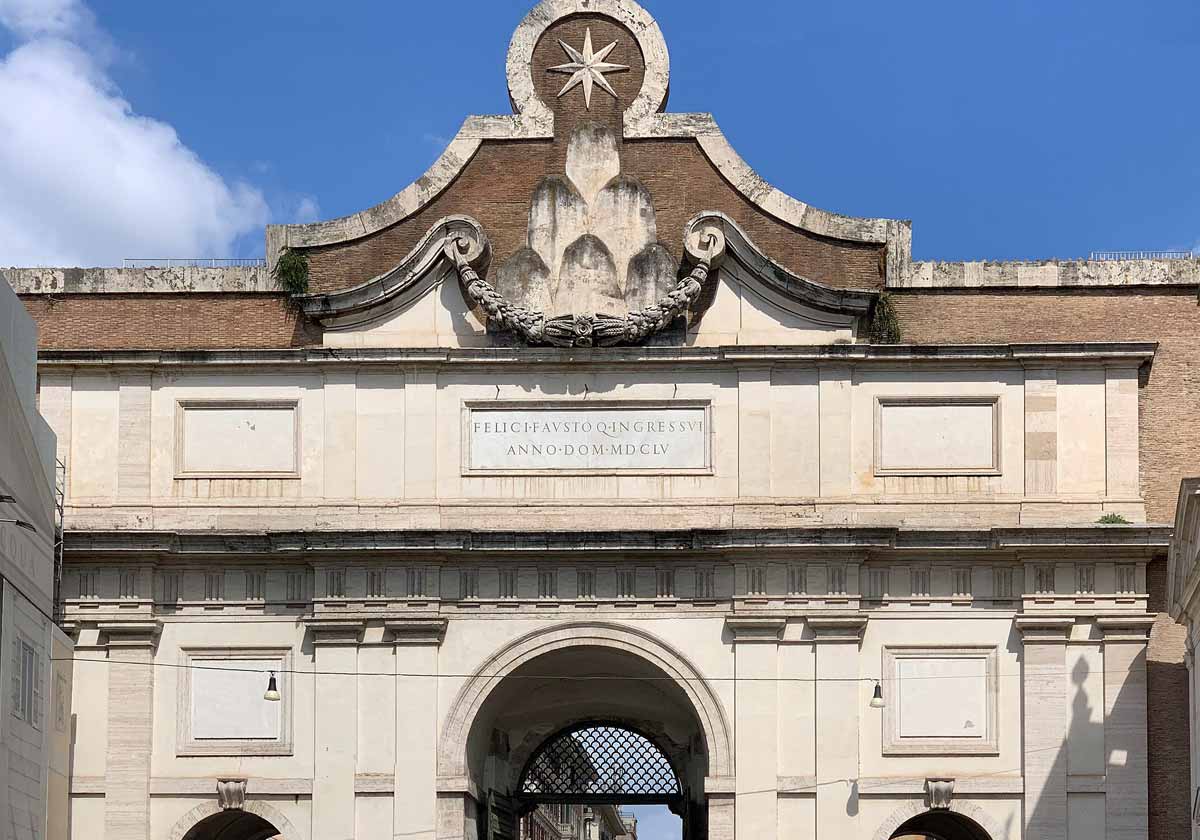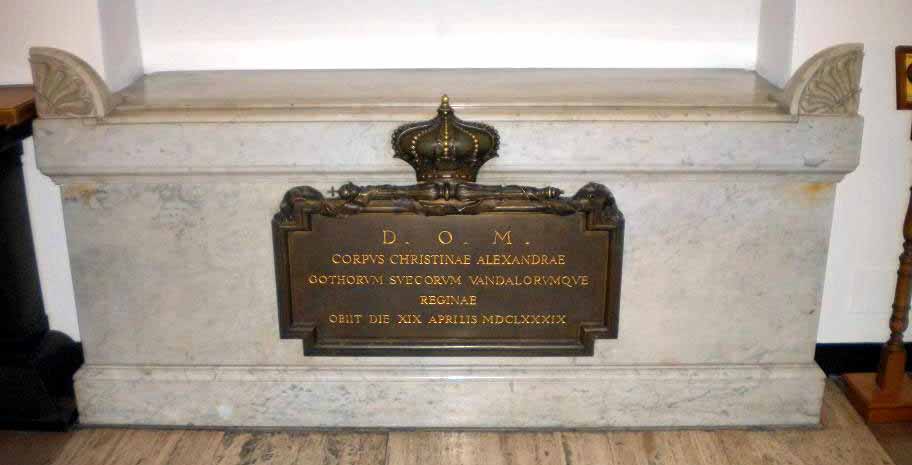Christmas of 1655. A hurricane hits Rome.

In classical Rome, the Porta del Popolo marked the starting point of the Via Flaminia, the great road heading north. For centuries, it was the quintessential entrance to the Eternal City. Travelers from across Europe would receive their first impression of Rome the moment they crossed this threshold.
As soon as they stepped into Piazza del Popolo, they could already feel the city’s magnetic allure. The twin churches flanking the square and the famous “trident” of streets leading into Rome offered a majestic welcome.
Today, the vast openness of the piazza—redesigned during the Napoleonic occupation in line with French rationalist principles—feels somewhat at odds with the intimate and irregular spirit of Rome. A city shaped over millennia, layer upon layer, by the passing of countless eras.
But the story that concerns us today took place much earlier, on a date that remains engraved on the inner side of the gate, in an inscription that reads:
FELICI FAVSTO[QVE] INGRESSVI ANNO DOM[INI] MDCLV
For a happy and auspicious entry, in the Year of Our Lord 1655.
The inscription was commissioned by Pope Alexander VII, who had just been elected that same year. His coat of arms crowns the gate: a mountain with six peaks topped by a star. Today, the plaque remains as a good omen for all tourists visiting the city—although no one enters through this gate anymore.
But originally, it was addressed to Queen Christina of Sweden, who, on the night of December 20, 1655, made her entrance into the Eternal City, ablaze with torches to welcome her.
With her came a true whirlwind—one that would sweep through the city during the more than thirty years she remained there. This woman, one of the most fascinating figures of her time in Europe, was also one of the most troublesome visitors a sovereign could ever face.

Queen of Sweden from the age of five, Christina began her training in matters of state while still a child, demonstrating an intelligence far beyond her years that astonished everyone around her. At eighteen, she gradually began to dispense with her tutors and took effective control of the government. Her ease in learning any subject, her prodigious memory, and her insatiable thirst for knowledge made her famous in courts across Europe.
She spoke eight languages fluently and had a solid command of Latin and Hebrew. She corresponded with Descartes—who spent his final months in Stockholm at her court, which was filled with scientists and intellectuals from all over Europe. Musical evenings, theatrical performances, literary gatherings… Christina turned Stockholm into the leading cultural center of the continent.
The queen also possessed great physical endurance and skill in all sports: fencing, marksmanship, horseback riding… She had been raised like a soldier, loved the outdoors, and could ride for hours without showing any signs of fatigue. Everyone was talking about the young queen, who at that moment—just before the rise of Louis XIV—was the undisputed protagonist of the European stage.
But Christina of Sweden was destined to astonish the world not only for her talents, but also for her untamable character and inability to submit to any rule. Authoritative and rebellious, she detested conventions and delighted in scandalizing the well-mannered. Her hunger for knowledge was matched by a craving for adventure and a determination to live life to the fullest, often beyond her means.
At the age of 28, after ten years of active rule and just at the dawn of what promised to be a long and glorious reign, she dropped her first bombshell: she announced her intention to abdicate the throne. It was like lightning from a clear sky. No amount of pleading could dissuade her. Once Christina had made up her mind, she never backed down.
The second blow was even greater: once she had officially stepped down and was far from Sweden, she announced her conversion to Catholicism. The queen of one of the most staunchly Lutheran countries had joined the enemy camp. It was considered high treason, and the entire kingdom was thrown into shock.
The pope saw in the conversion of this exceptional woman a great opportunity, and thanks to the mediation of King Philip IV of Spain, he agreed to let her reside in Rome, which had been Christina’s greatest wish.
Alexander VII had no idea yet what a headache her presence in the city would become. Three years later, now fully aware, he would confide to the Venetian ambassador that the queen “was a woman born a barbarian, raised as a barbarian, and with a head full of barbaric ideas.”
He must have suspected something, though, when he ordered the inscription to be placed on the Porta del Popolo. It was a polite but restrained welcome: brief, measured words on a gate decorated by Bernini with marked austerity. The inscription was not even placed on the outer face—where the queen would have seen it upon her arrival—but on the inner side, more discreet.
Ironically, today, when no one enters the city through this gate, it is precisely this inner side that is most visible to tourists, who are greeted by this message of a happy stay in Rome.
Queen Christina would die in Rome 34 years later, after a life filled with dramatic events that deserve future stories of their own. Today, the queen who astonished all of Europe in the mid-17th century lies buried in the Vatican, in the crypt of the popes—an extraordinary honor granted to very few individuals. She also has a funerary monument inside the basilica.


